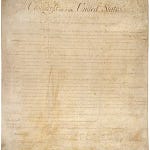This Day in Legal History: Switzerland’s Federal Charter
On August 1, 1291, the seeds of what would become modern Switzerland were planted with the signing of the Federal Charter, or Bundesbrief, by the cantons of Uri, Schwyz, and Unterwalden. This wasn’t the dramatic formation of a nation-state as we think of it today—it was three rural Alpine communities making a legal pact for mutual defense and cooperation in the face of growing Habsburg pressure. The document itself is barely over 300 words long, written in Latin, and mostly focuses on conflict resolution and how not to stab each other in the back (literally and figuratively). But make no mistake, this was a radical assertion of local legal autonomy during a time when imperial rule was the norm.
The Federal Charter stands as an early example of federalism—three small political entities entering into a horizontal, legally binding agreement without ceding total sovereignty to a monarch or emperor. In legal terms, it was more covenant than constitution, but its emphasis on mutual aid, lawful arbitration, and collective security laid the groundwork for Switzerland's famously decentralized structure. The signatories agreed to resist foreign judges and unlawful acts of violence, a precursor to ideas we now enshrine in due process and the rule of law.
This wasn’t a flashy revolution. There were no declarations of independence or fiery speeches. Just some pragmatic legalese scratched onto parchment that said, in effect, “Let’s have each other’s backs, settle disputes fairly, and not get bossed around by some distant duke.” Over time, this unassuming agreement evolved into the Swiss model of federalism and neutrality that still defines the nation today. It’s not just legal history—it’s a reminder that even minimalist governance structures can have maximal staying power.
Federal judges who issued rulings against Donald Trump’s policies have come forward with disturbing accounts of harassment, threats, and violent intimidation. At a “Speak Up For Justice” event, five judges—including Chief U.S. District Judge John McConnell—described receiving death threats, being targets of “swatting” incidents, and even having pizzas delivered to their homes under the name of a murdered judge’s son. McConnell, who blocked a major White House funding freeze earlier this year, disclosed that he received six credible death threats and over 400 hostile voicemails. One threat involved someone searching the dark web for his address, saying they wanted "Smith & Wesson to pay him a visit."
Judge John Coughenour, who ruled against Trump’s effort to limit birthright citizenship, recounted a terrifying police raid on his home due to a false murder report. The FBI later alerted him to a bomb threat. Despite being appointed by Republican President Reagan, Coughenour criticized political attacks on the judiciary as damaging to democratic institutions. The White House called the threats unacceptable and emphasized the importance of judicial safety. On the same day as the event, the Senate confirmed Trump’s nominee Gadyaces Serralta to lead the U.S. Marshals Service, who pledged to prioritize judge protection.
By mid-June, 408 threats against 297 judges had been logged in the fiscal year. Judge Esther Salas, whose son was murdered in 2020, praised the speaking judges for breaking their silence in defense of judicial independence.
US judges recount death threats, 'swatting' after rulings against Trump | Reuters
According to exclusive reporting done by Reuters, the U.S. State Department plans to allocate up to $7.85 million to support deportation operations in Costa Rica, marking a significant expansion of American-backed regional immigration enforcement. The funds, redirected from an economic development account, will be transferred to the Department of Homeland Security, which will coordinate with Costa Rican authorities to carry out deportations of migrants—especially those transiting through the country en route to the U.S.
This arrangement resembles a 2024 Biden-era agreement with Panama, where the U.S. financed detention and deportation of migrants moving northward. The new Costa Rica program is framed as a capacity-building effort that will fund deportation logistics and training on asylum screening. Still, critics warn it could deny vulnerable populations fair access to asylum protections.
The plan follows a Trump administration request earlier in the year for Costa Rica to accept 200 migrants from Africa, Asia, and Europe previously detained in the U.S. Many of them remain in Costa Rica, raising questions about long-term outcomes. Details on when deportations will begin or the final destination countries remain unclear.
Officials have also acknowledged that some migrants are now traveling south through Costa Rica, fleeing northward crackdowns and the end of Biden’s humanitarian parole options. The agreement does not require a direct connection between the migrant and the country to which they may be deported, a detail likely to fuel ongoing human rights concerns.
Homeland Security Secretary Kristi Noem has been visiting countries throughout Latin America to explore similar arrangements, suggesting this may be part of a broader regional deportation strategy under Trump’s immigration policy.
Exclusive: US plans to fund deportations from Costa Rica, document shows | Reuters
The U.S. Court of Appeals for the Federal Circuit closely examined whether President Donald Trump overstepped his authority by using emergency powers to impose sweeping tariffs on foreign imports. The legal challenge, brought by 12 Democratic-led states and five small businesses, centers on Trump’s use of the International Emergency Economic Powers Act (IEEPA)—a 1977 law typically used for financial sanctions—to justify tariffs against countries like China, Canada, and Mexico. Judges on the panel, many of whom were appointed by Democratic presidents, expressed skepticism, with one noting the law “doesn’t even say tariffs.”
This is the first major appellate test of Trump’s tariff authority, and it comes just as a deadline approaches for new tariff hikes. Trump has used tariffs aggressively in his second term as both an economic and geopolitical tool, citing trade imbalances and foreign inaction on fentanyl as justifications. The challengers argue that only Congress has the constitutional power to impose tariffs, not the president.
While the court has allowed the tariffs to remain in place during the litigation, a final ruling could have major implications. A previous lower court decision had already questioned whether IEEPA allows for tariffs tied to longstanding trade deficits. Meanwhile, tariffs have become a significant revenue source, generating over $100 billion so far this fiscal year—money the administration may need after passing new tax cuts.
The case won’t affect tariffs enacted under other legal provisions, like those on steel and aluminum. Trump’s legal team argues that restricting presidential tariff power would hinder trade negotiations. The president has recently secured agreements with the EU and Japan, and is currently working on deals with Mexico and others to avoid further tariff hikes.
US appeals court scrutinizes Trump's use of tariffs as trade deadline looms | Reuters
This week’s closing theme is by Wolfgang Amadeus Mozart, a composer of some note.
This week’s closing theme is a bright and confident slice of Mozart at his most charming: the Piano Concerto No. 19 in F major, K. 459, first movement, Allegro. Written in 1784 during a period of remarkable productivity, this concerto is one of the six that Mozart composed that year alone—each one displaying a different facet of his evolving style. No. 19 stands out for its buoyancy and rhythmic vitality; it’s elegant without being self-serious, energetic but never frantic.
Mozart, still in his late twenties, was performing regularly in Vienna, dazzling audiences with works that showcased both his pianistic skill and his compositional inventiveness. This piece was likely written for one of his own concerts, tailored to suit both his technical flair and his subtle wit. The Allegro opens with a playful orchestral theme, crisp and sunny, which soon gives way to the piano’s entrance—graceful, witty, and full of character.
There’s a conversational quality to the movement: the orchestra tosses out ideas, the piano responds, elaborates, jokes, and dances. But beneath its lightheartedness lies Mozart’s usual sophistication: unexpected harmonic turns, rhythmic displacements, and crisp motivic development keep the listener alert. The movement doesn't strive for drama or tragedy—it’s pure Mozartian joy, rendered in tight musical logic and unfailing charm.
As a closer, it offers an ideal farewell note: upbeat, clean, and full of clarity. You leave the room a little taller, a little lighter, like the music has tidied your thoughts and restored your sense of order. Mozart’s No. 19 may not be the flashiest of his concertos, but it radiates something rarer: calm confidence, musical humor, and the sense that everything—at least for a few minutes—is exactly where it should be.
Without further ado, Wolfgang Amadeus Mozart’s Piano Concerto No. 19 in F major, K. 459, first movement, the Allegro. Enjoy!














